

|
Audio from A to Z |
| |
|
| It's a poorly kept secret that the folks in the grip truck have
everything
you could possibly need on a film or video shoot. What is perhaps more closely held information is just how useful many of their tools are to audio folks.
The stands that we're used to using: those made by K&M and Atlas Sound are good enough for most things, but if you need to go up beyond 10-feet, then they fall short. The C-Stand, short for Century Stand, is commonly found in the grip department and often can be found in the electric department for use with most lighting instruments under 2kW. Grips use the stands, with the grip arm for holding light modifiers in front of light sources. The stands are commonly made of metal and have a collapsible base. The bases have 3 legs, with different heights, making it easy to nest the stands in close proximity, as well as for storage, where you can line them up in a compact straight line. You can also get them with one adjustable leg, allowing use on a sloped surface or on steps. The stands are usually unfinished metal color, and only recently have black stands been available. The stands commonly available today are made by Manfrotto, Avenger, and Matthews Studio Equipment. The top of a c-stand ends in a 5/8" unthreaded stud, called a baby pin or stud. You need to use an adaptor to make this accept a microphone mounting adaptor. Sure, you could thread the stud right on the stand, but using the adaptor is a good way to prevent the thread on the stand itself from getting munged in transport or storage. The grip arm, which we sound folks call a boom, has a heavy duty swivel (grip head) that clamps to the stud on the stand, and has a (usually) 40" arm that can be left bare, or another grip head can be attached. The grip head can be used to clamp onto something flat or tubular. Grip heads have a rubberized intermal surface, and large no-fooling knobs for tightening, and once tightened, they will not rotate or droop, as common-ordinary microphone booms are noted for. Leave the Viagra at the shop; it's not needed here. If there's a downside, it's that the grip head is fairly large. In this article, I'll concentrate on the stands made by Avenger, a division of Manfrotto. Do look at other stands made by the three manufacturers. The c-stand is only one of them. Remember that the grips always have the coolest toys. Click on any image to enlarge it. |
|
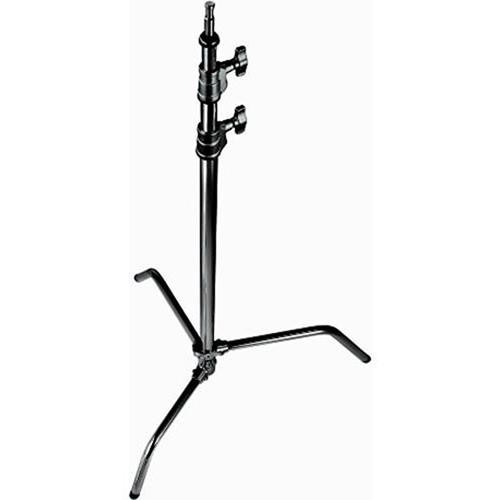
|
This is it. The legs fold on themselves and detach from the pole. Fully extended, this stand is about 10.5-feet tall. |
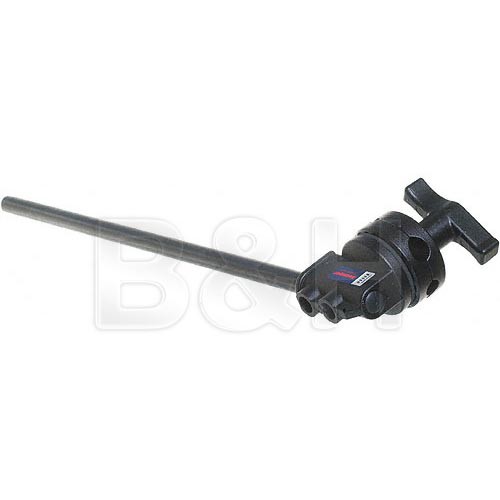
|
This is the D520LB extension arm, what we call a boom. The swivel is fairly large, but the locking handle is substantial and can be securely tightened, however these swivels lock much better than what we're used to. A downside is the size. |
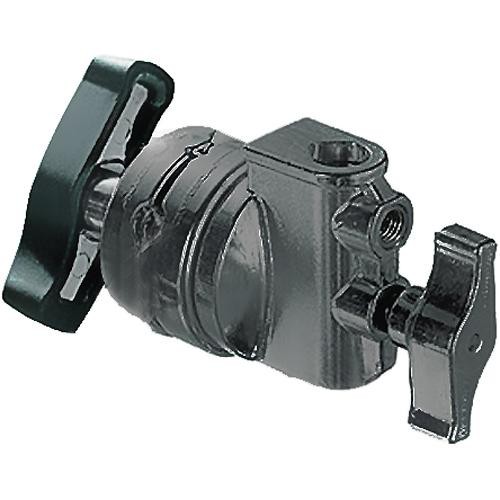
|
This is the swivel by itself, or the grip head. Attached to the extension arm, this can be used to grab objects both flat or round. |
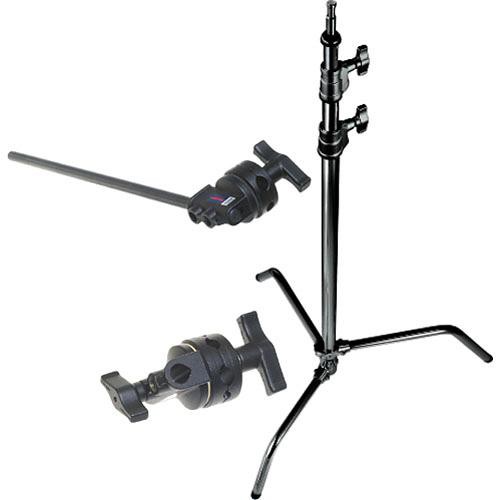
|
This is the Avenger c-stand kit. It includes the stand, an extension arm, and a grip head. It's available in black or chrome. |
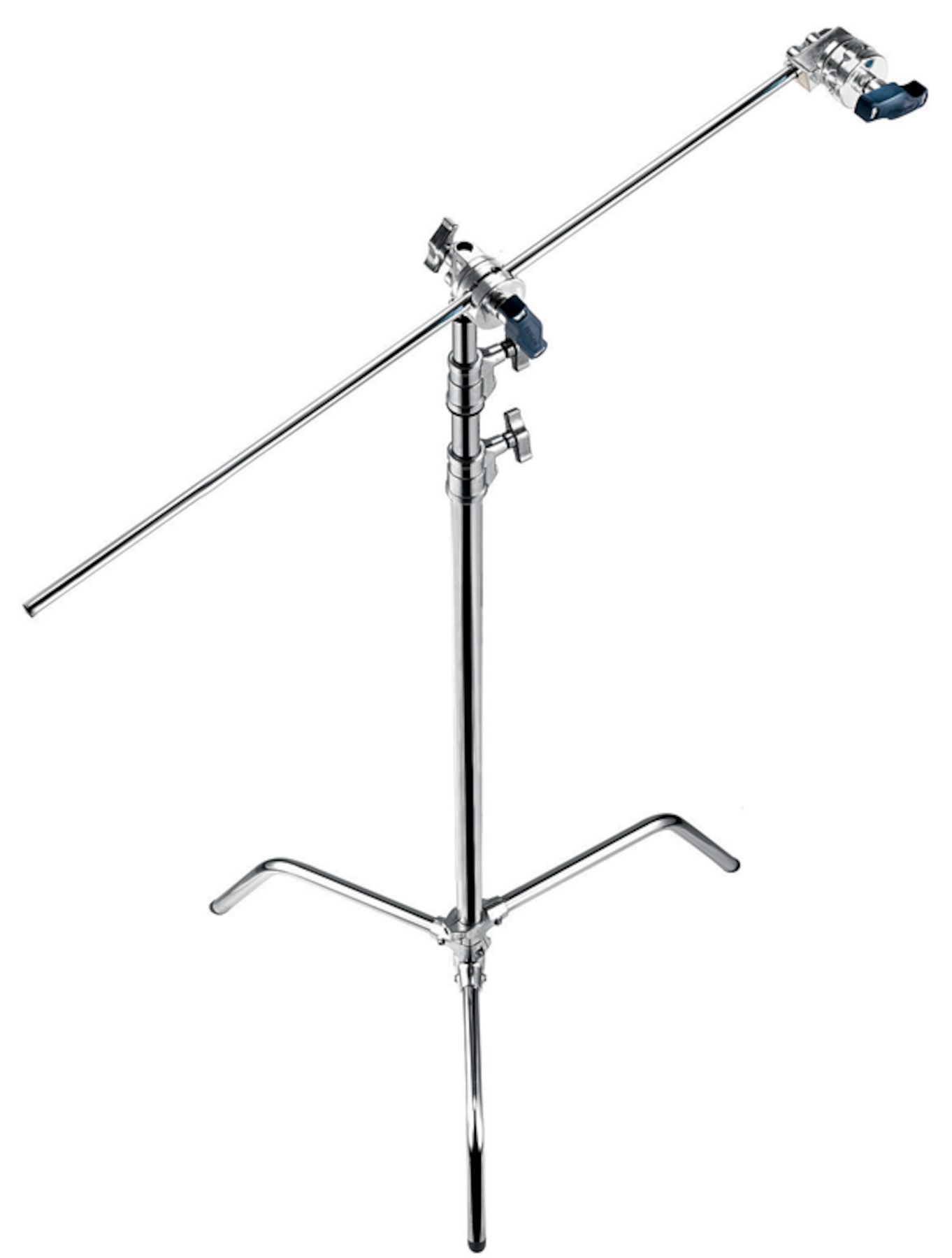
|
This is the chrome version of the c-stand kit. You can also see how the pieces go together. |
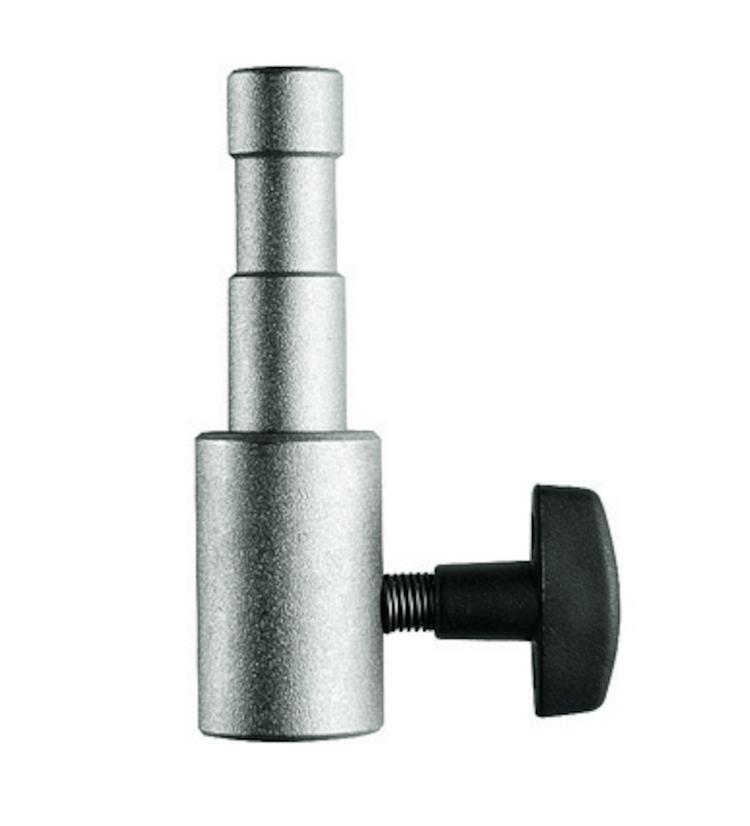
|
The Manfrotto #153 adaptor fits the 5/8" stud at the end of the c-stand pole. Add 5/8-27 threads to allow fitting microphones or their accessories.
The Impact company also makes an item like this (SKU CA-107). Since it is made in China, it's a bit less money. Available from B&H Photo. Impact also makes clones of other Manfrotto items. They're worth checking out. |
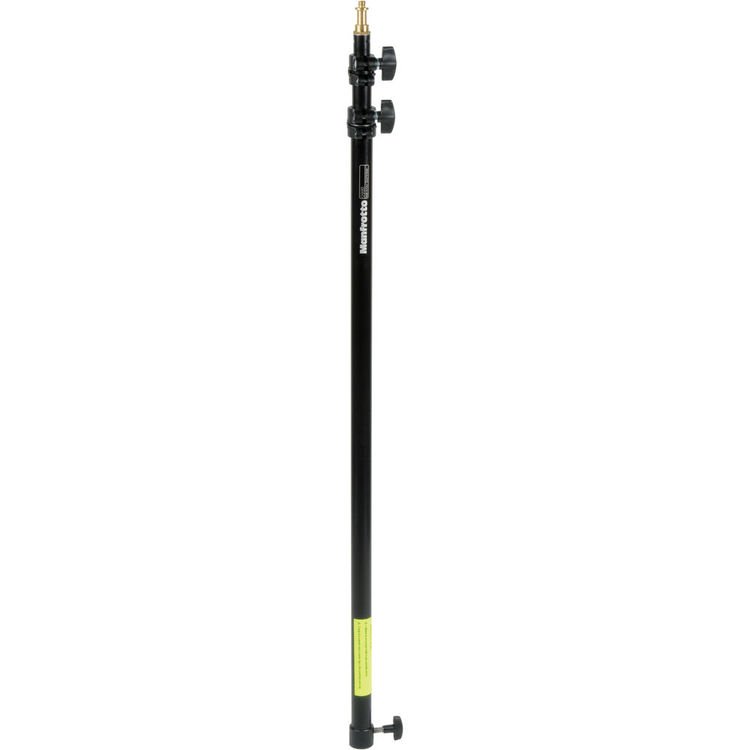
|
The Manfrotto 099b extension pole fits the end of the c-stand pole and adds from 35 to 92 inches. Lowell makes a shorter version of this piece, however it is not available in black. |
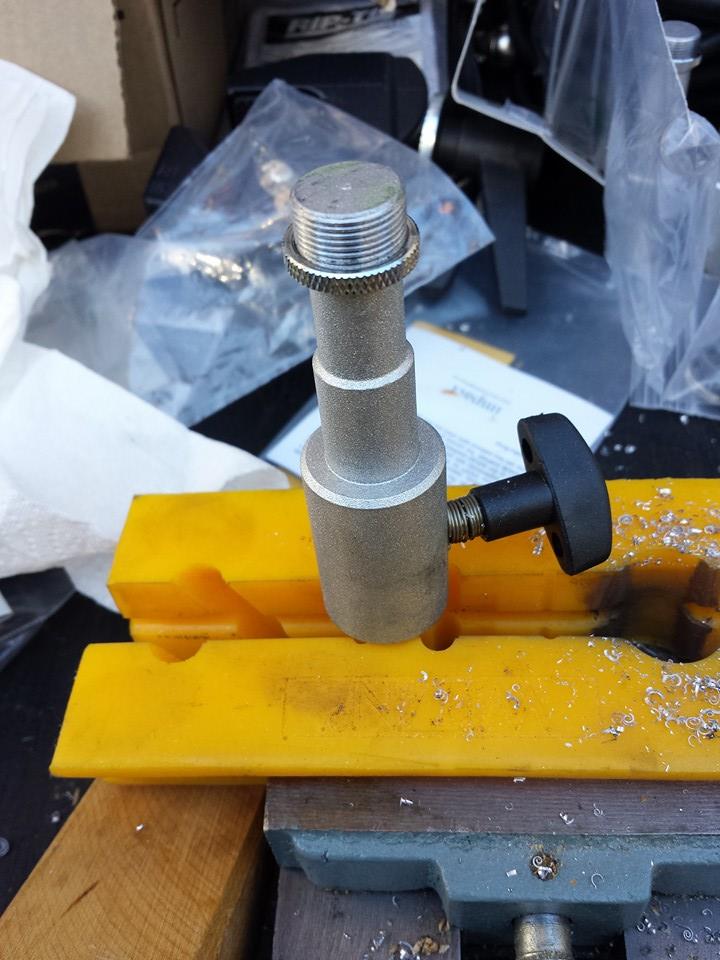
|
Here's how you make the Manfrotto 153 baby adaptor take microphones and their accessories. |
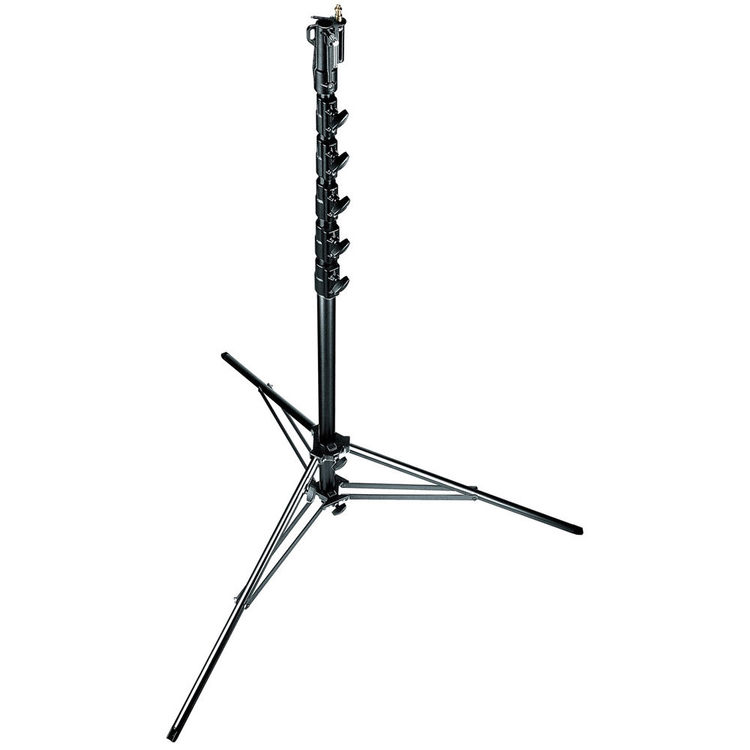
|
This stand is not a c-stand, but I present it here because it goes to 24-feet. It's aluminum, so not quite as heavy as a steel stand would be. It has one leveling leg. Weighs 22-pounds, rated to hold 2.2-pounds at full extension. The 269HDB-3U stand has 3-leveling legs. Some of these stands can also be purchased in steel, which is heavier and less expensive than aluminum. |
SuppliersManfrotto standsManfrotto Adaptors, Spigots, and Clamps Avenger stands Matthews Studio Equipment B&H Photo-Video Sandbags for extra stability. I buy them empty and use steel shot inside. Full Compass McMaster You can purchase this sort of hardware at a pro-photo shop, if such a thing exists where you live. Beyond that, FullCompass.com has some items, and B&H Photo has them as well. 5/8-27 Threading5/8-27 is the standard thread used for microphone stands in the USA. I believe it is getting wider acceptance in other parts of the world as well, however when you buy a European made microphone, you often get a thread adaptor threaded into the stand adaptor. The nomenclature means:
5/8-inch diameterYou use a tap to put threads into a hole, you use a die to add threads to a post or stud. You need a tap wrench to hold the tap while it's in use, and you need a die stock to hold the die while using it. Threads cut into metal have all sorts of different specs and different trades use different threading (for example, electrical vs plumbing). There's also coarse and fine thread. Microphone stand thread doesn't belong to any of these categories; it is it's own, which makes it difficult to find. Taps and dies with this thread can be purchased at McMaster. Don't forget you'll need a die stock (thing that holds the die for use) as well. McMaster also has the taps with this threading. You want a taper tap, and maybe a bottoming tap as well. You can try your local hardware store, but unless they're McMaster, they'll look at you like you're from Mars or beyond. If the hardware store person knows about 5/8-27, they might just be another audio person. Do take the time to explore the McMaster site, they're a wonderful resource for mechanical things. I buy most of my small nuts and bolts from them. ReferencesLet's not forget Wikipedia (aka Wackypakia):
|
|
Last modified 01/08/2021 120:27:41.